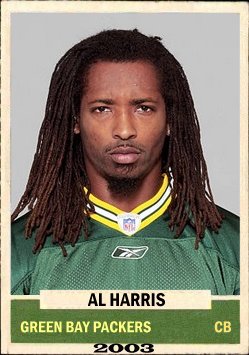Packer fans get a special Christmas present this year with today’s scheduled match against the Dolphins in Miami. It will be the fourth Packer game in history played on Christmas, and the first one on the road. Back in the day, NFL seasons ended by early to mid-December. In 1960 when Green Bay won the Western Conference crown for the first time under Vince Lombardi, the championship game was scheduled for Monday December 26, rather than play on Christmas. In fact, the 1955 title game between the Browns and Eagles was also played on the Monday after Christmas. This shibboleth was not done away with until Saturday, December 25, 1971, when the Cowboys beat the Vikings in the NFC Divisional Round and the Dolphins outlasted the Chiefs in overtime in the AFC.
The first time the Packers played on Christmas was in 2005 when the 11-4 Bears manhandled the 3-12 Pack 24-17 at Lambeau. Green Bay’s leading rusher was Noah Herron with 33 yards and the leading receiver Tony Fisher with eight grabs, while Brett Favre put the ball up 51 times, completing 30 for 317 yards, but with four interceptions and no scores.
Six years later, a Packer-Bear rematch had a happier ending with the 14-1 Pack rolling over 7-8 Chicago 35-21, Aaron Rodgers threw for 283 yards and five TDs, two each to Jordy Nelson and James Jones. Opposing QB Josh McCown threw for one score and two picks.
More recently, the 12-3 Packers squeezed by the 7-8 Browns on a Saturday game in the final week of last season. The Packers led the game from the five-minute mark, but the Browns scored the last 10 points of the game to make the Lambeau faithful sweat it out at the end. Rodgers threw for 202 yards and three scores, two to Davante Adams in his final regular season appearance in the Green and Gold. Cleveland’s Baker Mayfield threw four interceptions, two by Rasul Douglass, and was sacked five times.
Packer fans are hoping we don’t find a lump of coal today at Lambeau.









Custom cards in a variety of styles.



















